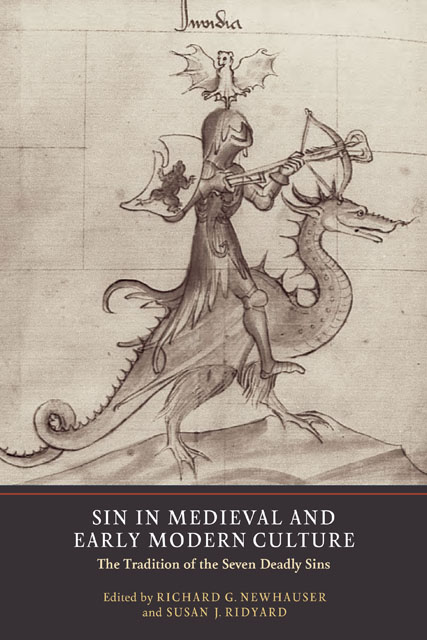3 - Vices and Virtues: A Reassessment of Manuscript Stowe 34
Published online by Cambridge University Press: 28 February 2023
Summary
The early Middle English dialogue Vices and Virtues is found uniquely in British Library MS Stowe 34, a manuscript dating from the first quarter of the thirteenth century. It has been little examined since it was edited in the nineteenth century, so the time is ripe to reassess Vices and Virtues as a contribution to the history of the vices in medieval literature and as a vernacular work of spiritual guidance. Here I offer an introduction to the text, demonstrating that Vices and Virtues examines capital vices from the Cassianic list and, in Morton Bloomfield’s phrase, ‘noncardinal’ sins, and that it has much in common with homily collections such as those found in the Trinity and Lambeth manuscripts. Like them, it is a text constructed at a time of intense pastoral reform and intended for many different types of readers.
The early English Vices and Virtues is found uniquely in British Library MS Stowe 34 (previously Stowe 240), which dates from the first quarter of the thirteenth century. Morton Bloomfield’s description in his classic work on The Seven Deadly Sins is typical of the accounts we find of it: ‘a prose dialogue of about 1200 … a loose series of separate topics, united by a dialogue between Reason, the Soul, the Body, and several other allegorical personages’. He continues that it includes ‘noncardinal sins’ and ‘probably began with the eight capital sins’, of which we appear to have the last four of the Cassianic list, the beginning of the manuscript being missing. He claims that, ‘With one exception, the Ancren Riwle, none of the works written in England during the thirteenth century contains important treatments of the cardinal sins’; and he places Vices and Virtues in his chapter on the sins in English literature to 1200, asserting that ‘Ælfric’s sermons and the Vices and Virtues contain the only two outstanding examples of the employment of our concept in this early period in English’. One should note, however, that the date of composition was probably earlier than 1200, the language of the manuscript being, according to one assessment, ‘older than that current at the time when the copy was made’. The language belongs to the south-east of England, maybe Essex.
The manuscript is a hand-book: 8¾ inches by 6 (160 by 220 mm), with (now) just 49 folios. Although the writing looks untidy, it is clear and legible.
- Type
- Chapter
- Information
- Sin in Medieval and Early Modern CultureThe Tradition of the Seven Deadly Sins, pp. 65 - 84Publisher: Boydell & BrewerPrint publication year: 2012
- 1
- Cited by

